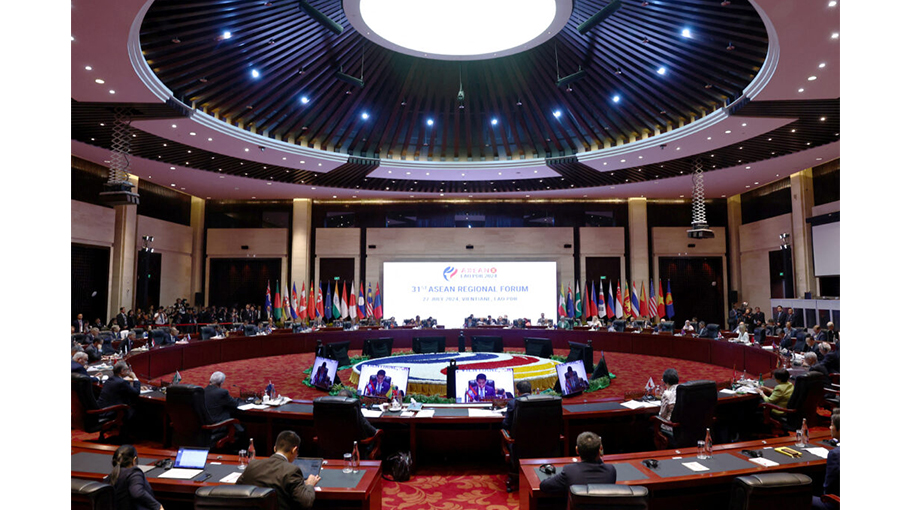ASEAN centrality: use it or lose it

Little wonder that ASEAN is widely recognised as the most successful experiment in regionalism the Global South has ever seen. In a region that is home to an ambitious great power, as well as some of the world’s most important economies, it was no small feat for ASEAN — a subregional association made up of small and middle powers — to evolve from the modest goal of managing security problems among themselves to claiming an undisputed place at the centre of the regional multilateral architecture after the end of the Cold War.
But success in entrenching ASEAN centrality shouldn’t lead Southeast Asia to the complacent assumption that such centrality is an end in itself, rather than a means to an end. ASEAN’s hard-won centrality makes it the best platform for order-building in the multipolar Asia Pacific region that has now emerged. As such a platform, it is unique in its inclusivity, its convening power for a broad range of stakeholders outside its membership, and in how it gives small and middle powers (crucially, middle-income and least-developed economies) a chance to steer the agenda of Asia’s multilateral cooperation.
Minilateral enterprises, from the Quad to the Shanghai Cooperation Organisation, are by design exclusive and too obviously aligned with the interests of one of the great powers, or too limited in the functions they seek to serve, to be the basis of order-building attuned to the needs of most of Asia’s states.
Whatever shortcomings non-member stakeholders might perceive in ASEAN, all would agree that the breadth of interests it has co-opted into its processes — in what has been dubbed a strategy of ‘omni-enmeshment’ — uniquely positions it as an honest broker in a region where US-China competition for policy influence will be an inevitable feature of the region’s future.
As experts and officials throughout the region realise all too well, complacency about the broad political buy-in to the idea of ASEAN centrality will only ensure that it is undermined in substance over time, such that Asia’s future is defined less by its members’ needs than by the dynamics of great power competition. ASEAN has to start more seriously spending the political capital that it has painstakingly accrued since the 1990s when it staked out a claim to centrality within the regional institutional architecture. That claim was realised by ASEAN investment in the ability of its own institutions to ensure that regional political and security challenges were addressed in multilateral formats that dilute the influence of major powers, and ensure that the negotiation of further economic integration in the region is guided by market logic rather than the arbitrarily-defined national security interests of big powers. On the latter task, ASEAN has a potentially transformative but as-yet underdeveloped instrument in the form of RCEP. ASEAN can grow its political capital by showing runs on the board.
If its dialogue partners understand their own interests, ASEAN will find enthusiastic partners in beefing up its institutions and processes. Pitching a vision of Australian engagement with ASEAN in this week’s lead article, Anthony Milner foregrounds the organisation’s utility in making ‘the [challenging] move from unipolar rulemaking to plural, multipolar rulemaking’. This refers to the rise of overlapping paradigms of international order and rule-making: the residual liberal vision that underlies the much-vaunted (though, he says, increasingly problematised) ‘rules-based order’; a still-inchoate Chinese-authored notion of regional order; and finally, the home-grown vision of ‘building a resilient, regional community’ infused with the ASEAN values of ‘diversity’ and ‘consensus’.
As Milner observes, ‘Southeast Asians are used to operating in hierarchies and prefer to make space for — and benefit from — a rising power, rather than forge alliances to oppose it. Their “friendly to all sides” approach is driven by a quest for autonomy within a dynamic regional equilibrium’. In other words, ASEAN will continue to disappoint those who want to see the bloc self-consciously become an outright instrument of constraining Chinese power.
But the United States and its allies, including Australia, Japan and South Korea, should remember what Southeast Asia has long understood: that the co-optation of China into multilateral processes of the kind ASEAN coordinates is a valuable way for the region’s small and middle powers to preserve their agency in dealing with Asia’s resident great power while benefiting from the development opportunities created by trade and investment ties with it.
The EAF Editorial Board is located in the Crawford School of Public Policy, College of Asia and the Pacific, The Australian National University.
Source: East Asia Form




